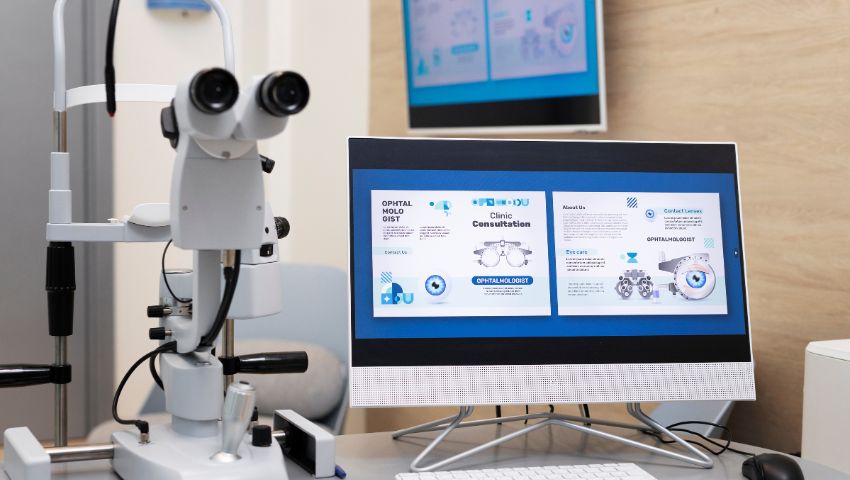Why Top Clinics Are Centralizing Fertility Lab Management

Table of Contents
- Introduction
- What Centralized Lab Management Means
- Why Fertility Clinics Are Making the Shift
- Core Benefits of Centralized Lab Management
- Technology Behind Centralized Operations
- Key Features to Look For
- Real-World Impact
- Challenges and Considerations
- FAQs
- Conclusion
Introduction
Fertility labs play a vital role in ensuring successful outcomes for patients undergoing assisted reproductive technologies (ART). To improve efficiency, safety and collaboration, top fertility clinics are increasingly turning to centralized lab management systems powered by IVF software. These platforms unify operations, allowing clinics to better coordinate tasks, monitor processes in real time and enhance patient satisfaction.
What Centralized Lab Management Means
Centralized fertility lab management refers to the use of a single, integrated platform to manage all lab-related activities—from gamete handling and embryo tracking to temperature control and compliance reporting. Instead of relying on fragmented tools and manual workflows, labs operate under a unified digital ecosystem.
Why Fertility Clinics Are Making the Shift
Manual systems and disconnected platforms leave too much room for errors, miscommunication, and inefficiencies. Clinics are moving toward centralized systems to:
- Reduce lab errors and mismatches
- Standardize protocols across all cases
- Ensure accountability and data traceability
- Improve team collaboration across departments
- Comply with national and international ART regulations
This shift is not just about technology adoption—it’s about transforming the culture of lab precision and accountability.
Core Benefits of Centralized Lab Management
Here’s what leading clinics gain from centralizing their fertility lab operations:
- Enhanced Accuracy
Digital tracking and automated workflows reduce manual handling errors and prevent data mismatches. - Real‑Time Monitoring
Staff can track critical lab parameters like temperature, humidity, and storage status in real time, ensuring sample safety. - Better Coordination
Shared dashboards and task systems improve communication among embryologists, clinicians, and administrative teams. - Compliance Automation
Auto‑generated logs and audit trails help clinics maintain compliance with standards like CAP, HFEA, and ICMR. - Scalable Growth
As patient volume increases, centralized systems allow labs to scale without compromising quality.
Technology Behind Centralized Operations
| Feature | Purpose |
|---|---|
| Barcode & RFID Tracking | Accurate sample identification and movement logs |
| IoT‑based Sensor Monitoring | Tracks temperature, humidity, and equipment health |
| AI Workflow Assistants | Suggest optimal workflows and detect anomalies |
| Secure Cloud Data Storage | Allows safe, encrypted data access and backup |
| Mobile App Integration | Enables updates and alerts on‑the‑go |
Key Features to Look For
- End-to-end gamete and embryo tracking
- Alert systems for temperature fluctuations
- Role-based access for different team members
- Automated audit and compliance logs
- Integration with EMRs and patient portals
The right solution should be user-friendly, compliant, and tailored for reproductive labs.
Real-World Impact
A mid-sized fertility center in Singapore reported a 35% reduction in lab-related errors within 6 months of adopting centralized lab management. Staff were able to respond to temperature alerts faster, streamline reporting and reduce lab turnaround time for each cycle.
Such results are becoming common as more clinics recognize the operational value of digital centralization.
Challenges and Considerations
Transitioning to a centralized system does involve initial setup time and training. Key challenges include:
- Data migration from older systems
- Team resistance to changing workflows
- Initial cost of implementation
However, most clinics recover these costs quickly through improved outcomes, fewer repeat cycles, and enhanced regulatory confidence.
FAQs
What is centralized fertility lab management?
It’s a unified digital platform that manages all lab processes from tracking to compliance in one place.
Is centralizing lab management expensive?
While there’s an initial cost, clinics typically save money through reduced errors and operational efficiency.
How does it help with compliance?
It auto-generates logs and tracks user actions, making audits and reporting faster and easier.
Can it be customized for different lab sizes?
Yes, most platforms offer modular features to suit clinics of any scale.
What’s the biggest benefit?
It enhances patient safety by minimizing errors and ensuring consistent quality control.
Conclusion
As the demand for ART services grows, the need for safer, faster and more organized lab environments is more urgent than ever. Centralized fertility lab management is no longer a luxury—it’s a necessity for forward-thinking clinics. It ensures accountability, compliance and better patient outcomes, making it a smart investment for every fertility center.
